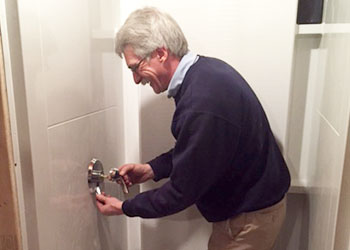A private water system works the same as a municipal water system. In most cases, the water is coming from the same aquifer. The main difference with a private water system is that you monitor and control the water, and have individual pressure tanks, instead of a large holding tank or tower.
Three parts to your water system
Most home water systems include three basic elements, shown in the diagram below:
1. A well or other water source 2. A pump to move the water from the well into the home 3. A pressure storage tank to provide automatic operation of the home water system
How do these parts work together?
Here is a simple guide to understanding how each of these components work together to deliver clean, safe and economical water where and when you need it.- The well. Wells can be drilled, driven or dug. They can be shallow (less than 25 feet deep) or they may be deeper. Other water sources that may work for your private water system include cisterns or surface water, such as a spring or lake.
- The pump. Jet pumps are located above the ground and can be used in shallow or deep wells. Submersible pumps are submerged in the water source, and can be used in either shallow or deep wells. We are a Professional GPDA Member, installing Goulds pumps.
- The tank. Rapid Service installs Amtrol well tanks. Amtrol invented the diaphragm well tank to provide a buffer of pressurized water that prevents rapid pump cycling caused by small water usages like running a faucet or flushing a toilet. Rapid pump cycling wastes energy and can lead to pump failure – an expensive repair or replacement often costing thousands of dollars.
How to determine the right components
Every property is different. No matter how shallow or deep your well is, we will find you the solution! Here are some of the factors we will consider when determining the correct components for your private water system:| Inside diameter of well casing | Determines the type & size pump that can be installed, and is a factor in determining well storage capacity. |
| Well depth | Determines how deep you can place the pump or jet assembly, and helps determine vertical lift & well storage capacity. |
| Static water level | Identifies how high the water rises when the system is not in use & helps determine well storage capacity. |
| Well yield | Can be determined by test pumping the well, and helps determine total well capacity and discharge capacity under peak use conditions. |
| Storage capacity | Helps determine whether the water supply is adequate to satisfy peak demand conditions. |























